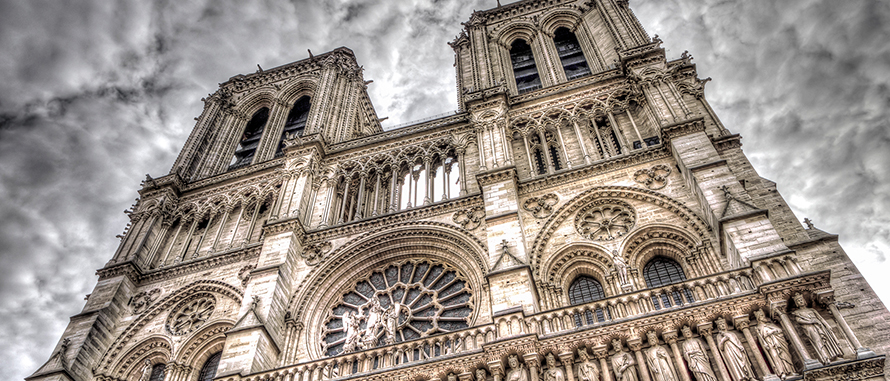On Monday, more than 400 French firefighters tried to save Notre Dame Cathedral from a devastating fire. Here are nine things to know about one of Europe’s most iconic historical and religious monuments:
1. Notre-Dame de Paris (in French? Notre Dame de Paris?) It is a Catholic cathedral in Paris that took centuries to complete. The first stone was laid in 1163, in the presence of Pope Alexander III, and the initial construction was completed in 1260, almost a hundred years later. The cathedral was not officially consecrated until 1345. Even after its completion, construction and restoration continued. from the 17th to the 21st century.
- 2.
- Au the anti-Christian fervor of the French Revolution.
- Notre Dame was transformed into a Temple of Reason and “Re-consecrated”.
- The cult of reason atheies.
- Later.
- When the “Committee on Public Salvation”.
- Which controlled France.
- Enacted the cult of a Supreme Being.
- It was “Reconvocated” to the deist cult of the “Supreme Being”.
- When interest in new religions waned.
- The cathedral became a food store.
3. Napoleon Bonaparte signed an agreement in 1801 to restore the cathedral to the Catholic Church, three years later he decided to perform his coronation ceremony in the cathedral, becoming the first Frenchman to have the title of emperor in a thousand years. Pius VII gave Napoleon the crown that was put in his head by the young conqueror of Europe.
4. In 1831, the novelist Victor Hugo wrote Notre-Dame de Paris, published in English under the title “The Hunchback of Notre Dame?(?The hunchback of Notre Dame?). Hugo began writing the novel in part to draw attention to The Value of Gothic Architecture. A few years earlier, Hugo had published an article entitled The War of the Demolishers, with the aim of saving the medieval architecture of Paris. Based in part on Hugo’s effort to draw attention to the cathedral, King Louis Philip ordered to be restored in 1844.
5. De 1856 to 2012, the four main bells aloft of the cathedral’s northern towers sounded every 15 minutes; important events also sounded, as the end of World War I in 1918, the liberation of Paris in 1944 and in honor of the victims of September 11, 2001. The four bells, which were called Angelique-Franoise, Antoinette-Charlotte, Hyacinthe-Jeanne and Denise-David, in reference to the French Catholic Saints, were merged and replaced by 8 new ones in 2012. The reason for the change was to recreate the sound of the original bells of Our Lady of the seventeenth century.
6. The cathedral’s pipe organ dates back to the 18th century and is the largest in France. It has five keyboards, 109 registers and about 7,374 tubes. In the 1990s, the organ was restored at a cost of $2 million and required 40,000 hours of work. The update included a digital musical instrument (MIDI) interface that records and allows instant playback, a speech synthesizer, a printer, and a telephone line for an office near Versailles.
7. In 2013, a hive of honey-producing bees was placed on the roof of the sacristy (i. e. the room where the priest prepares for service). What kind of bees? Buckfast Bees?was created from a special variety in a Benedictine monastery and known for its docility. The hive is located in the cathedral to “remember the beauty of man’s creation and responsibility to it. “
8. La used for the cathedral structure consisted of 1300 oak trees representing more than 21 hectares (2. 5 acres) of forest.
9. The current fire is part of a long history of damage to the cathedral. In the 16th century, the Huguenots and king of France destroyed and modified the structure of the building. During the French Revolution, 28 statues of biblical kings on the Western Facade was beheaded for mistaken for mistaken for statues of the kings of France. Minor damage to medieval stained glass windows was also caused by bullets lost during the liberation of Paris in 1944. original spiral in 1786.

